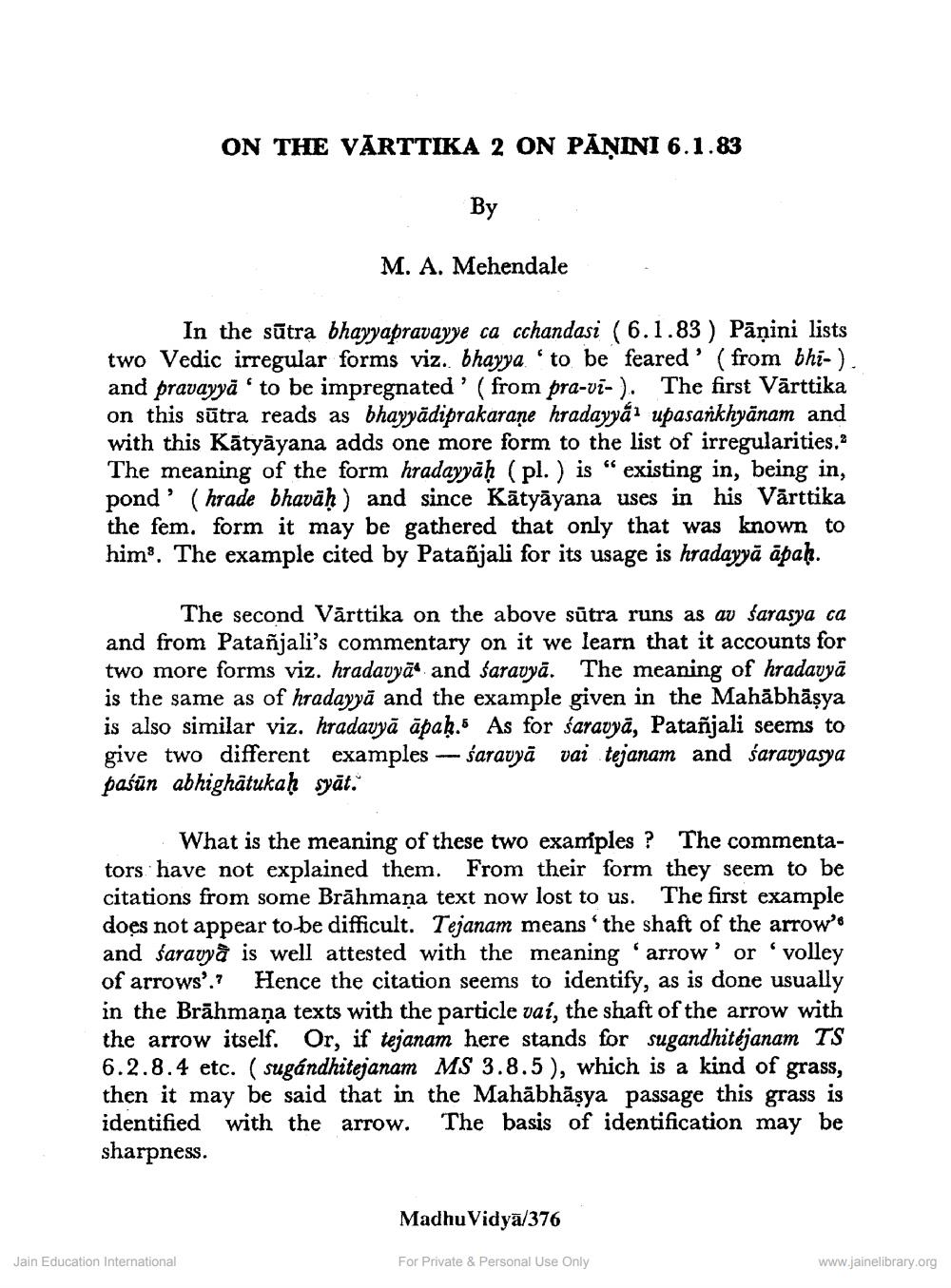________________
ON THE VÄRTTIKA 2 ON PĀŅINI 6.1.83
By
M. A. Mehendale
In the sutra bhayyapravayye ca cchandasi (6.1.83) Pāņini lists two Vedic irregular forms viz. bhayya to be feared' (from bhi- ). and pravayya' to be impregnated' (from pra-vi-). The first Vārttika on this sūtra reads as bhayyadiprakarane hradayya1 upasankhyānam and with this Katyayana adds one more form to the list of irregularities." The meaning of the form hradayyāḥ (pl.) is " existing in, being in, pond' (hrade bhavaḥ) and since Katyāyana uses in his Vārttika the fem. form it may be gathered that only that was known to him. The example cited by Patanjali for its usage is hradayyā āpaḥ.
The second Varttika on the above sūtra runs as av farasya ca and from Patanjali's commentary on it we learn that it accounts for two more forms viz. hradavya and saravya. The meaning of hradavyā is the same as of hradayya and the example given in the Mahabhāṣya is also similar viz. hradavyā āpaḥ. As for saravyā, Patañjali seems to give two different examples - śaravyā vai tejanam and śaravyasya pasun abhighatukaḥ syāt.
Jain Education International
What is the meaning of these two examples? The commentators have not explained them. From their form they seem to be citations from some Brāhmaṇa text now lost to us. The first example does not appear to be difficult. Tejanam means 'the shaft of the arrow' and faravya is well attested with the meaning 'arrow' or 'volley of arrows'." Hence the citation seems to identify, as is done usually in the Brāhmaṇa texts with the particle vaí, the shaft of the arrow with the arrow itself. Or, if tejanam here stands for sugandhitéjanam TS 6.2.8.4 etc. (sugándhitejanam MS 3.8.5), which is a kind of grass, then it may be said that in the Mahābhāṣya passage this grass is identified with the arrow. The basis of identification may be sharpness.
Madhu Vidya/376
For Private & Personal Use Only
www.jainelibrary.org




